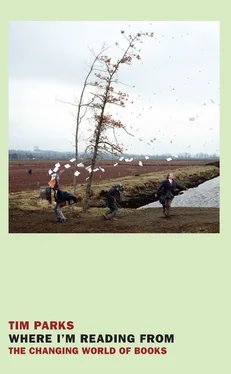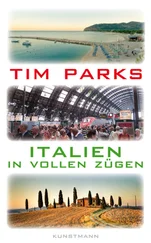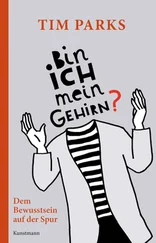But a style requires a combination of interacting elements. What do we have? Well, a reiterated absence of knowledge or meaning: “I don’t know.” “No particular reason.” “I didn’t believe.” “I had no sight into Daisy’s heart.” This lack of knowledge might connect up with the repetition of the verb drift . One doesn’t know where to go, so one drifts. Then, at the heart of the paragraph, there is one strong affirmation of certainty—“This was a permanent move”—but the claim is undermined by a blatant oxymoron, made possible by the double meaning of move : “move house” or just movement. To read a few more pages of The Great Gatsby would alert us to the fact that the book is full of oxymorons—ferocious indifference, magnanimous scorn, inessential houses—suggesting a general state of precariousness.
Perhaps related to the oxymoron, “permanent move,” is the other oddity in this paragraph: “wherever people played polo and were rich together.” Standard usage has people being happy together, or sad together: emotional states. Alternatively partners can get rich together, or get stoned together: progressive developments. But this confusion of an emotional state with a generous bank balance, “were rich together,” is emblematic of everything that makes Gatsby’s elegant world so oddly fragile, as if it existed only in the magic of words that somehow stick together despite their contradictory energies.
As with Henry Green, much of this is lost when Fitzgerald’s text leaves the culture it was written in and travels around the world in other languages. I’ve looked at five Italian translations of Gatsby . None is able to convey “unrestfully,” “permanent move,” or “get rich together.” It’s surprising how much trouble they have too with an “irrecoverable football game,” a longing for an unrepeatable past that connects Tom with Gatsby and measures the distance between them: Gatsby dreams of reviving love, Tom of reliving sporting glory. And as the separate stylistic devices disappear in translation, so does the pattern that they combined to sustain; losing the pattern one inevitably loses the peculiar position the text created for itself within its culture of origin and hence its special relationship with readers. In translation, stripped of its style, Gatsby really doesn’t seem a very remarkable performance.
What I’m getting at is that style is predicated on a strict relation to a specific readership and the more that readership is diluted or extended, particularly if it includes foreign-language readers, the more difficult it is for a text of any stylistic density to be successful. In the past, a work of literature would establish a reputation in its culture of origin, first among critics who were presumably equipped to appreciate it, then among the larger public; only later, sometimes many years later, would it perhaps be translated by those cosmopolitan literati who wished to make it known in another country. Now, on the contrary, everything is immediate; the work of a major established author is pronounced a masterpiece the day it is published; translations, even of less celebrated authors like myself, are often prepared for simultaneous publication in a score of countries. In the long run, whether through a growing awareness of the situation on the part of writers, or simply by a process of natural selection, it seems inevitable that style will align with what can be readily translated more or less into multiple languages and cultural settings, or into an easily intelligible international idiom.
In this regard let me mention two recent novels at once very literary and evidently global in their aspirations: Andrés Neuman’s Traveler of the Century , and the 2013 Booker winner, The Luminaries , by the New Zealand writer Eleanor Catton. Neuman, Argentinian, but resident in Spain, sets his work in the early part of the nineteenth century somewhere in Germany (neither date nor place are exactly defined), where a mysterious traveler falls to frequenting the cultural salon of a rich family and deploys his wit to seduce a local and highly intellectual beauty. The register is high, the lexical range considerable, the style extravagantly articulated and playfully pompous; but the knowledge it asks of its reader is all book knowledge, general history, a vague awareness of what a high prose style once was. There is no appeal to anything writer and reader know and share in the here and now, though we do get some softly eroticized, politically correct enthusiasm for internationalism.
This is what our mysterious traveler talks to his beloved about when they are at last between the sheets:
How can we speak about free trade, Hans pronounced as he lay next to Sophie, of a customs union and all that implies, without considering a free exchange of literature? We should be translating as many foreign books as possible, publishing them, reclaiming the literature of other countries and taking it to the classroom! That’s what I told Brockhaus. And what did he say? Sophie asked, nibbling his nipple. Hans shrugged and stroked her back: He told me, yes, all in good time, and not to get agitated. But in such exchanges, said Sophie, it’s important that the more powerful countries don’t impose their literature on everyone else, don’t you think? Absolutely, replied Hans, plunging his hand between Sophie’s buttocks, and besides, powerful countries have a lot to learn from smaller countries which are usually more open and curious, that is to say more knowledgeable. You’re the curious one! Sophie sighed, allowing Hans’s probing finger in and lying back. That, Hans grinned, must be because you’re so open and you know what’s what.
Reviewing The Luminaries , an eight-hundred-page mystery story set in 1860s New Zealand, Catton’s compatriot C.K. Stead remarks on its “chintzy,” “upholstered” pastiche of the nineteenth-century novel and adds:
Every episode has its setting, decor, clothing, its period bric-a-brac, its slightly formal but often sharp dialogue. This is costume drama. It is conventional fiction but with the attention to fact and connection that the (cross-checking and online research) facilities of the modern computer permit. That apart, only the author’s cultural sensitivity in dealing with Maori and Chinese characters, and an occasional anachronistic word or phrase in the dialogue (“paranoid”, “serendipitous”) locate authorship in the present.
In general terms this would also be an appropriate description of Neuman’s book. Removing us from the present, pastiching what the modern ear assumes the eloquence of the past to have been, the writer can appear “stylish” without appealing to anything in his readership’s immediate experience. Catton’s prose has been likened to that of Dickens in The Pickwick Papers . But for readers who followed it in the 1830s, Pickwick was drenched in references to the world they shared, and the language itself was not so far away from what could be heard and read every day. If one translates Dickens into another language, an enormous amount is lost; even for the Londoner reading him today, half the references mean nothing. Neuman’s and Catton’s novels have dispensed in advance with this intense engagement with a local or national readership and seem set to lose very little as they move around the world in different languages. It is in this regard alone that one has to disagree with Stead. Authorship is located in the present exactly insofar as its appeal—as in a Hollywood costume drama or indeed an extravagant computer game—is to well-established, globally shared tropes and not to any real contact with the specificity of a here and now.
LITERATURE AND BUREAUCRACY
Читать дальше












